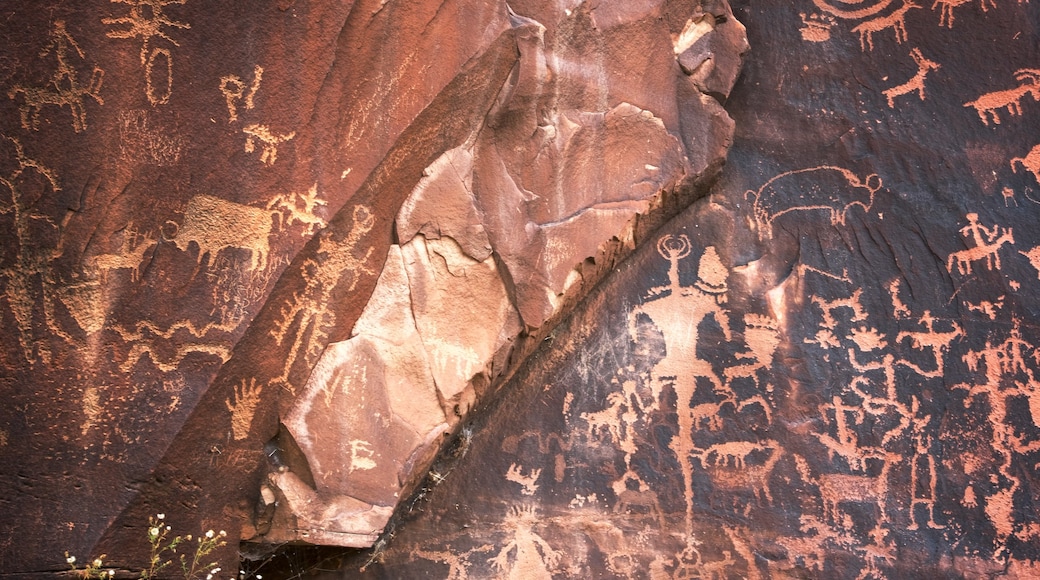Gain insight into ancient history at one of the largest known petroglyph collections in the country on the way to Canyonlands Needles District.
Make Newspaper Rock State Historical Monument a must-see as you enter or exit Needles District of Canyonlands National Park. Not only is it a quick walk from roadside parking, but this rock that tells a story, according to its original Navajo name, also offers a unique glimpse of communications from the past 2,000 years.
Ancestral Puebloan, Fremont and Navajo people lived, farmed and hunted in this area between 500 and 2,000 years ago. View more than 650 individual glyphs they carved into the desert varnish of the 200-square-foot (18-square-meter) rock, creating the markings by scratching off the black manganese-iron deposit to reveal the lighter orange color of the sandstone cliffs. Generation after generation added their own marks to the rock, known as Tse’ Hane to the Navajo, making it a living museum today.
Bring binoculars to see the detail of Newspaper Rock from behind the fence at the bottom of the cliffs. Walking close to the rock itself is not permitted. Look for figures of men, animals, weapons and geometric and abstract symbols. Modern Native Americans have interpreted the markings as family or clan symbols, spiritual messages, calendar events, crop cycles and migratory routes.
After viewing the rock, continue along the Indian Creek Corridor Scenic Byway, which eventually leads into the Needles District of Canyonlands National Park. Along the way, look for Indian Creek, a renowned rock-climbing destination. The pair of towering buttes awash in red rock and juniper forest symbolizes this area appropriately known as Bears Ears National Monument.
Find Newspaper Rock along the Indian Creek Corridor Scenic Byway in Bears Ears National Monument, about 50 miles (80 kilometers) south of Moab. Visiting the site does not require a fee or permit. It is open year-round. The best times to visit for very pleasant weather are spring and fall. The site has a parking area and restroom. Leashed pets are allowed.
















